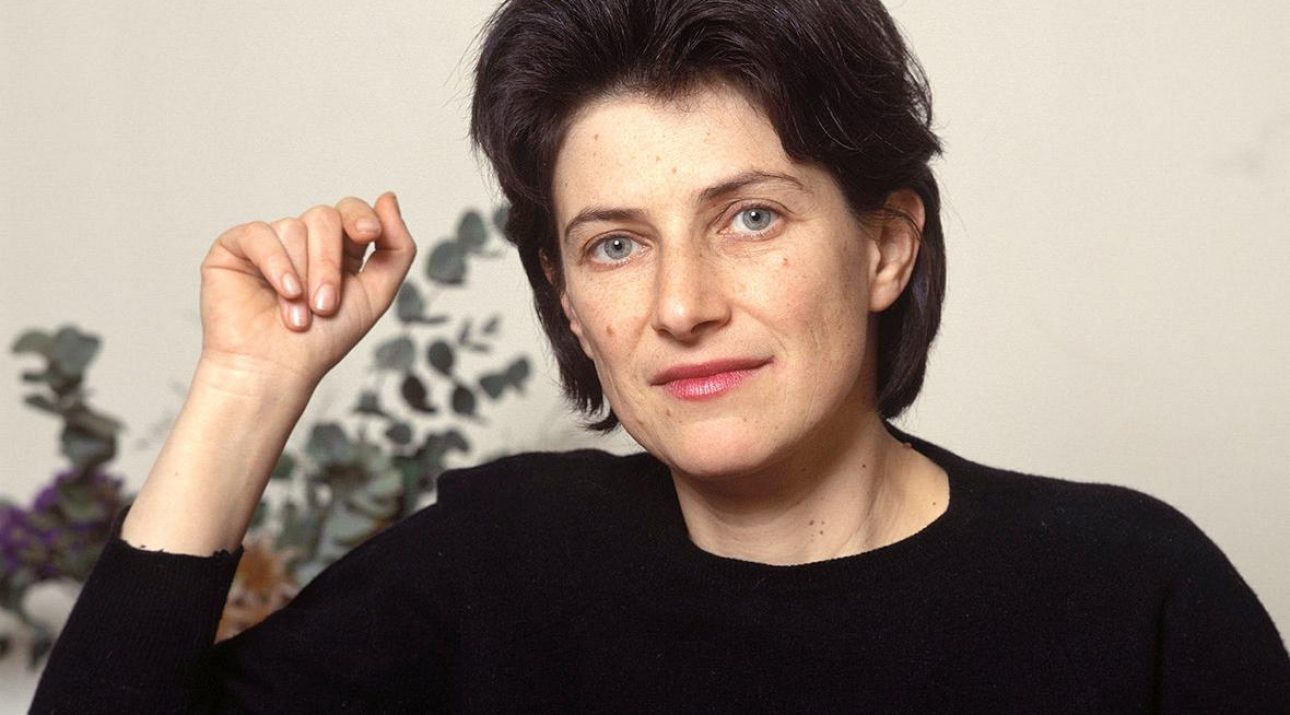The gloomy gaze of the poor
- Currently, in Hollywood there are few female directors; the data will not surprise anyone, despite initiatives like Me Too. However, in the creation of the Hollywood industry, especially in the early films, several women participated, often hiding their work.

Between 1920 and 1930, about 20 women worked in over 1,000 films, producers, writers and techniques. Women participated in various film processes, including the creation, filming or selection of actors. However, this policy had not spread sufficiently in the large studies: Warner's machismo was evident and predominant from the outset, while at MGM and Universal the work of women was fundamental in marketing and technical terms. Many of them had worked in advertising or in acting. The writers, for their part, came from the pulp literature, had academic studies and, thanks to their vision, the stories of women were dressed up as modernity.
In the film direction, however, this did not occur until the 1940s. The exceptions are very few: French Alice Guy Blaché or Californian Dorothy Arzner. After them appeared Ida Lupino (1918-1995). Lupino was born just over a century ago in a family of music-hall artists from London, a show that combined popular songs, comedy and dance, called music-hall. A low-stature British woman, but with a great personality and eyes, started to run the films by chance. He shot about half a dozen films, including the first noir shot by a woman, the excellent The Hitch-Hiker (Auto-stop, 1953).
In addition, in her films she addressed morally conflicting issues such as rape, unwanted pregnancy or bigamy, always with a modern and independent view of women. This advanced character made the large studies never have a good eye on Lupino. In this way, she founded the independent producer The Filmakers with her husband and writer Collier Young. He filmed for four years cheap but solid films shot on the streets of California, which became the precursors of independent American film that would later take root. Thus, Lupino, in addition to pioneering women, laid the foundation for independent production to be undertaken, among others, by director John Cassavetes.
In her films she addressed morally conflicting issues such as rape, involuntary pregnancy or bigamy, always with a modern and independent view of women.
As an interpreter, he didn't get the recognition or success of the big Hollywood stars. However, he was a terrible actor, although he said he was “Bette Davis of the poor.” He used a similar name to judge his work as a filmmaker: “Don Siegel of the poor.” Although Lupino didn't recognize it, his work behind the cameras was extraordinary, not just because of his gender perspective. On the other hand, there are similarities between the trajectories of Lupino and Siegel: both started filming section B films to end on television. However, Siegel, after passing through the small screen, returned to the movies to make larger productions, including Dirty Harry (Harry Zikina, 1971). Lupino never returned to the movies.
Unexpectedly, filmmaker
The British actress started to roll by chance in the movies: His first job was Not Wanted (The Involuntary, 1949). The director of the film suffered a heart attack in the shooting, in whose script Lupino also participated, so Lupino took responsibility and ended it, although it does not appear in the credits. Lupino made six other films in which the protagonists are female characters that did not fit the seasonal models: women in very committed situations that appeared very sporadically in the cinema of the time. These characters are middle-class, vagabond, wandering female, after traumatic experiences, such as unwanted pregnancies, rape, vesicle and conflictive maternal relations between mother and daughter.
So, Not Wanted is a movie about a pregnant young woman who breaks with her family and leaves the child in adoption. In addition, Never Fear (Don't Be Afraid, 1949) is a film about a dancing woman. As a result of poliomyelitis, your career and private life will be destroyed. The protagonist of these first two films is Sally Forrest, a personal discovery by Lupino who liked to work with new talents – in the case of female characters, he chose those who had their own physical likeness. Years later, in 1956, filmmaker Fritz Lang will merge Lupino and Forrest in the pioneering film of psychopaths While the City Sleeps (The city sleeps, 1956).
He didn't treat these issues in a sensationalist way, but Lupino tried to explain that these were social problems that were far from personality disorders. To do so, he used the typical means of black cinema: the black and white documentary style close to the documentary and the reduced budgets of section B.
Female characters who did not fit the models of the season are the protagonists of Lupino films.
The London filmmaker was not considered feminist, but his films can be seen from that point of view. According to Martin Scorsese, Lupino highlighted the passive role that women played in Hollywood cinema.
Under the command of men
Lupino was born within a family of great theatrical tradition. His father was the famous British music-hall actor Stanley Lupino. The passion for the interpretation of family members is attracted in the 17th century when the Italian puppeteer Giorgio Luppino arrives in England for political reasons. Lupino, however, hated the representation. However, at the age of 14, she started working as an actress, with the intention of not disappointing her father. He got very young into the dynamics of the great Hollywood studios. Their first work is They Drive by Night, directed by Raoul Walsh in 1940. The English actress got into the skin of a femme fatale killer of the genus Noir. Lupino was proud to represent “evil women, whore or murderers,” although she was a sleek woman in her everyday life. As a result of this work, he received criticism and became a celebrity. Next to him he had Humphrey Bogart, with whom Lupino lived a very scandalous relationship.
His brilliant performance as an actor in this black film was nothing more than the germ of his long career in the noir genre, participating in several prestigious films, always under the direction of a classic and significant man. Some of these films have also become a masterpiece of film history, such as the premiere of High Sierra (1941) a year later, when Lupino returned to work with Walsh and Bogart. The film is one of the summits of black film and a magnificent representation of Lupino, who showed her most sensitive side in interpreting Marie Gars, a woman who will fall in love with the shattered gangster Roy Earle (Bogart). They also include Jean Negulesco's Road House (The Road House, 1948), On Dangerous Ground by Nicholas Ray (The Danger Zone, 1950) and While the City Sleeps by Fritz Lang (While the City Sleeps, 1956).
No other land dokumentalaren zuzendari Hamdan Ballal kolono sionistek jipoitu zuten astelehenean bere herrian, beste hainbat palestinarrekin batera, eta Israelgo militarrek eraman zuten atxilo ondoren. Astarte goizean askatu dute.
Donostiako Tabakaleran, beste urte batez, hitza eta irudia elkar nahasi eta lotu dituzte Zinea eta literatura jardunaldietan. Aurten, Chantal Akerman zinegile belgikarraren obra izan dute aztergai; haren film bana hautatu eta aztertu dute Itxaro Bordak, Karmele Jaiok eta Danele... [+]
35 film aurkeztu dira lehiaketara eta zortzi aukeratu dituzte ikusgai egoteko Euskal Herriko 51 udalerritan. Euskarazko lanak egiten dituzten sortzaileak eta haiek ekoitzitako film laburrak ezagutaraztea da helburua. Taupa mugimenduak antolatzen du ekimena.
Pantailak Euskarazek eta Hizkuntz Eskubideen Behatokiak aurkeztu dituzte datu "kezkagarriak". Euskaraz eskaini diren estreinaldi kopurua ez dela %1,6ra iritsi ondorioztatu dute. Erakunde publikoei eskatu diete "herritar guztien hizkuntza eskubideak" zinemetan ere... [+]
Geroz eta ekoizpen gehiagok baliatzen dituzte teknologia berriak, izan plano orokor eta jendetsuak figurante bidez egitea aurrezteko, izan efektu bereziak are azkarrago egiteko. Azken urtean, dena den, Euskal Herriko zine-aretoak gehien bete dituztenetako bi pelikulek adimen... [+]
Otsailaren 24tik eta martxoaren 1era bitartean, astebetez 60 lan proiektatuko dituzte Punto de Vista zinema dokumentalaren jaialdian. Hamar film luze eta zazpi labur lehiatuko dira Sail Ofizialean; tartean mundu mailako lau estreinaldi eta Maddi Barber eta Marina Lameiro... [+]
A conference for architects has just been held in Madrid to discuss the crisis of the professional architect. They have distinguished the traditional and contemporary way of being an architect. What is traditional? From the epic architect who appears in The Brutalist, where... [+]
Itoiz, udako sesioak filma estreinatu dute zinema aretoetan. Juan Carlos Perez taldekidearen hitz eta doinuak biltzen ditu Larraitz Zuazo, Zuri Goikoetxea eta Ainhoa Andrakaren filmak. Haiekin mintzatu gara Metropoli Foralean.























